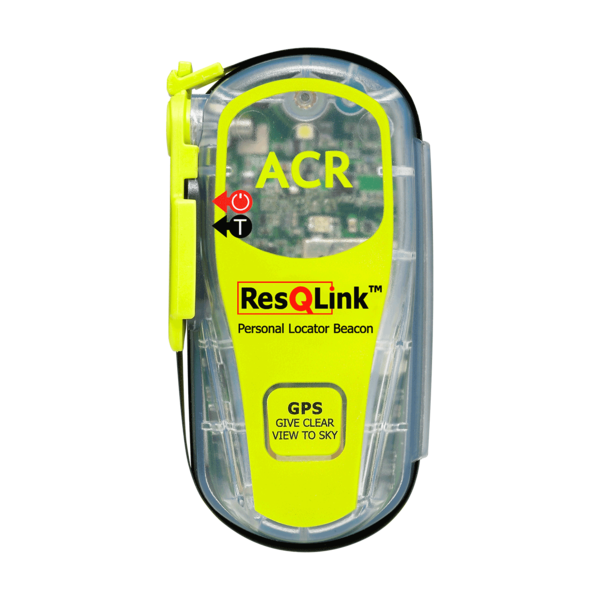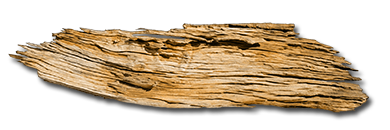PERSONAL LOCATOR BEACONS (PLB)
We have two ResQLink Personal Locator Beacons (PLB) that are available for loan to Groups undertaking activities where having a PLB will enhance safety.
The PLB are held at Branch and the Administration team will manage their issue and return. The beacons are all registered with AMSA under a ScoutsACT registration.
To borrow them, contact the office on (02) 6282 5211 during office hours and arrange a time to pick the beacon up. You will need to tell the office the following:
- Date out and likely date of return
- Group Leader's name and contact number
- 'Home' contact name and number (if different from the above) - this person must be available to take calls and know the activity plan
- Activity details including location
You will need to plan when you would like to borrow a beacon - they can't be picked up out of hours.
The beacons are lightweight, in a zip up bag complete with instructions and a whistle. The units are waterproof and float, but are not designed or approved for marine use.
More information can be found at https://www.acrartex.com/products/catalog/personal-locator-beacons/resqlinkplus/#sthash.1DB9ILOu.dpbs. Drop and floatation testing are NOT required!

When should you consider borrowing a beacon? Anytime you or members of your group are going on an activity that takes you out of certain mobile telephone range. Day hikes in many parts of Namadgi National Park, for example, are out of reliable mobile telephone coverage and a PLB will provide the ability call for help in emergency situations (similar to when you would make a 000 call, and not for 'I'm tired', 'I stubbed my toe' and the like).
While only a Leader can arrange to borrow the beacons, we fully expect that they will be carried by our youth members on activities - indeed we really hope this is the case! When a Leader gives the PLB to the youth members, they should be briefed on situations where they should activate it, how to activate it (show the instructions that come with it) but without actually activating it (this is very important - don't test it unless you want to explain why to a nice person in blue) and discuss what is likely to happen once activated. They should be advised that once activated, do not turn it off until told to do so by the authorities.
So what does happen once a beacon is activated? The beacon transmits an emergency signal on 406mHz that includes a precise location from its inbuilt GPS; it also sends out a homing signal on 121.5mHz. Assuming the beacon isn't in a cave or mine, the signal is received by the Cospas/Sarsat network of satellites and details sent to the nearest ground station; in Australia this is the Australian Maritime Safety Authority. Because the beacon is registered with them, they have several Branch contact numbers which AMSA will immediately call. We will confirm it is one of ours and the transmission legitmate (unless it is at an address in Garran!).
Regardless of whether they can contact any of us, the relevant search and rescue authority (normally the Police in our general area) will be notified and search and rescue operations commence. The type of operation undertaken will vary with the circumstances: a helicopter might be sent to the location, a police officer or ranger drive to the site or a rescue boat sent.
To use them, the beacon should be placed with a clear view of the sky and, if at all possible, in a cleared area or by a road or track. This is especially true when in forested country, but activation should not be delayed just because you are not in a clear area. It can be very useful to have a way of signalling to the rescue crews when they are close: torches, fires (if safe), whistles and the like.
There's more information here: http://beacons.amsa.gov.au/about/how-they-work.asp.
Once used, don't throw the PLB away! The manufacturer will replace any PLB used for a rescue.
If the PLB is damaged for any reason, please let us know on returning it. We understand that things happen and are much happier to know about it so we can retire the PLB and get a new one. Imagine what you'd think if you really needed it to find that someone had stepped on it and it no longer worked!
So you've got a SPOT Beacon? SPOT beacons are great tools to keep people informed about how your activity is going out in the wilds. They can tell people on the receiving list where you are, whether you're running late and other things too. They have an SOS function that will result in AMSA being informed of an activation much like a PLB. However: they work off the commercial satellite telephone network and do not have the same certainty that an emergency activation will be received (they are good but not as good); their battery use is relatively high and flat batteries are a risk whereas a PLB has certified battery performance (24 hours continuous minimum); and you need a subscription as well whereas no subscription is needed for a PLB. If you're going somewhere and you absolutly positively must be able to get the emergency signal through - you need a PLB (or better). Having both isn't a bad idea - the SPOT beacon can keep people informed of progress and the PLB gives you certainty of an emergency alert getting through. Scouts ACT has a SPOT Beacon for loan.
UHF CB RADIOS
We also have four GME UHF CB radios, complete in a travel box with chargers and two spare batteries, available for loan. They are 80 channel radios (the photo below is of a slightly later model); https://www.gme.net.au/catalogue/hand-held-radios/tx677qp.aspx.
The CB radios are available to assist Groups run adventurous activities as a complete set (that is you borrow and return the whole set, not part thereof!). As 2 watt units, they have a range of up to 5km (line of sight) and are simple to use. On a recent QS expedition, the batteries lasted for more than four days (switched off at night).
To borrow them, contact the office on (02) 6282 5211 during office hours and arrange a time to pick the radios up. You will need to tell the office the following:
- Date out and likely date of return
- Group Leader's name and contact number
They are not waterproof so aren't suitable for water based activities. We do ask that you take care of them when borrowing them but, as can happen, if something is broken please let us know so we can fix it.


